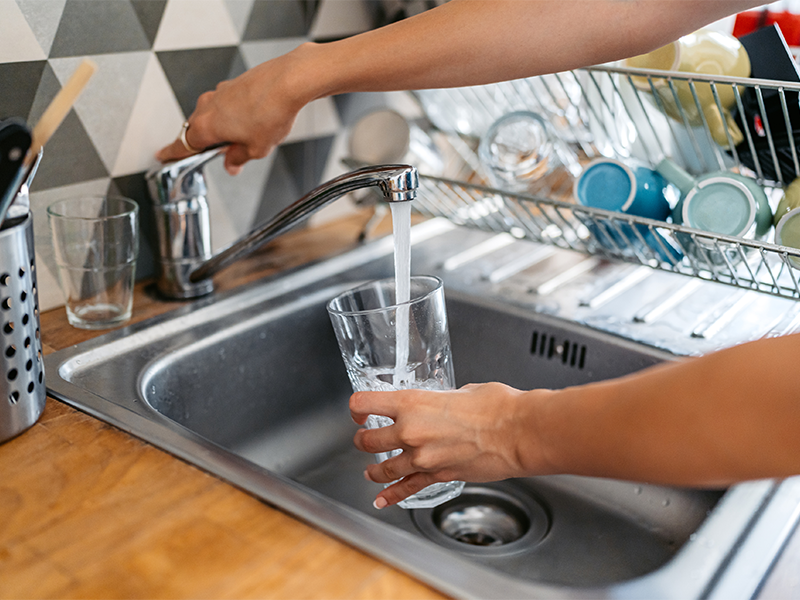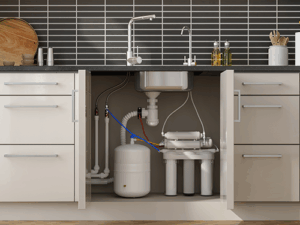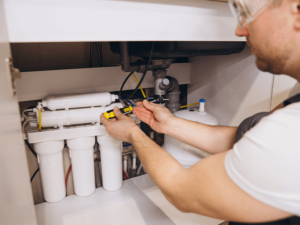
Water quality is essential for every household, yet many Maryland residents may not realize what’s lurking in their tap water. From naturally occurring minerals to industrial pollutants, various contaminants can affect both safety and taste. It is, therefore, very important that you learn to detect the most common among these, so you can make better informed decisions about filtration, treatment, and your overall water supply. And oh, before you ask, this knowledge is crucial—whether you rely on well water or municipal supply.
What Are Water Contaminants?
Water contaminants are substances that reduce water quality, including chemicals, heavy metals, and microorganisms. In Maryland, these pollutants come from industrial discharge, agricultural runoff, and natural sources.
Local agencies and researchers monitor contaminants to understand their impact on the state’s water systems. Common pollutants in Maryland’s water include lead, nitrates, and bacteria from sewage leaks. Exposure to these substances can pose risks to both human health and aquatic ecosystems.
Regulatory bodies conduct routine testing to ensure safe drinking water. These efforts help identify contamination trends, improve treatment processes, and protect Maryland communities from waterborne hazards.
Common Water Contaminants in Maryland
Maryland’s water sources contain various contaminants that can affect quality and safety. Local agencies regularly test for these pollutants to protect public health.
Industrial activities contribute chemicals like PFAS and heavy metals, which can seep into water supplies. In agricultural regions, fertilizers and pesticides introduce nitrates and other harmful substances into surface and groundwater.
Natural sources also play a role, with deposits of arsenic, iron, and microbial elements affecting water quality. Regular testing and analysis, however, help Maryland officials address contamination risks and ensure safe drinking water for residents.
How Water Contaminants Affect Your Health
Contaminants in Maryland’s water can lead to both immediate and long-term health concerns. Some substances, like bacteria and chemical residues, may cause stomach issues, skin irritation, or respiratory problems.
Prolonged exposure to pollutants such as lead, nitrates, and PFAS can contribute to chronic conditions, including neurological disorders and organ damage. Vulnerable groups, including children and the elderly, face higher risks from contaminated water. Their bodies are more sensitive to harmful substances, making routine water testing essential for protection.
Regular testing allows health and environmental agencies to address contamination quickly. These efforts help refine water treatment processes and ensure Maryland communities have access to clean, safe drinking water.
How Can Water Treatment Help?
Water treatment plays a major role in removing contaminants from Maryland’s water sources. Local facilities use advanced methods to reduce industrial chemicals, heavy metals, and harmful microbes, ensuring a safer water supply for residents.
Modern treatment plants rely on filtration, disinfection, and chemical processes to eliminate pollutants. These systems effectively reduce risks associated with drinking water contamination and protect public health.
By actively removing harmful substances, water treatment lowers exposure to dangerous elements. Regulatory agencies can monitor system performance to ensure Maryland’s water remains safe and meets quality standards.
Facilities must also continuously upgrade their treatment technologies to address emerging contaminants as ongoing research helps improve efficiency and maintain reliable, clean water for communities across the state.
Why Maryland Residents Should Be Concerned
Water contamination in Maryland can pose risks to public health if harmful substances remain in local water systems. Residents may be exposed to pollutants that affect both short-term and long-term well-being.
Industrial and agricultural activities introduce chemicals, heavy metals, and nitrates into water supplies. State agencies monitor these contaminants to help maintain safe drinking water.
Certain groups, such as children, the elderly, and individuals with weakened immune systems, are more vulnerable to water pollutants. This makes regular water testing crucial for protecting public health.
Local testing and treatment efforts help reduce contamination risks. By staying informed through updated water quality reports, Maryland residents can take necessary precautions to ensure safer drinking water.
Improve Your Water Quality Today!
At Hague Quality Water of Maryland, we are committed to providing the highest quality water treatment solutions to ensure your home or business has access to clean, safe water. Contact us today to learn how we can help improve your water quality with our reliable systems and expert services.




